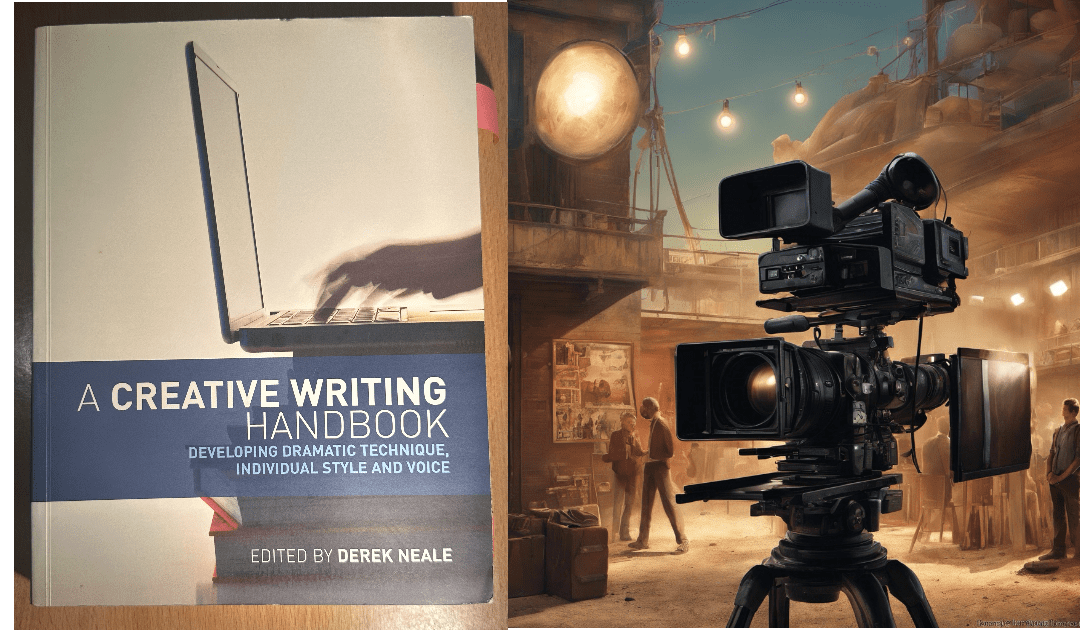The Open University advanced creative writing course aims to develop the student’s dramatic technique, individual style, and voice. It explores dramatic writing: writing for the stage, screen, and radio, and how the techniques employed can enhance our writing.
My big take away from the course was that screen writing is all about the scene and the cut. What’s the one word that comes to mind when you think of a film director on set, perhaps with a megaphone in his hand? For me it’s “Cut!”. The cut is not only the end of a scene, it’s the start of the next one.
I use Scrivener to write with. It allows me to plan my book. It’s like a folder with places to file all my character sketches, my research notes, maps and photos of places. You can outline each chapter and the scenes within the chapter. It really helps me think about where each scene ends and the next one starts.
I have only once tried my hand at screen writing, and I thoroughly enjoyed it. It was a collaborative effort with my wife Claire. We had both read Josephine Tey’s Brat Farrer, and thought it would make a wonderful film. We watched the 1986 television adaptation and thought it was terrible. We were sure our version was better, and more true to the book. We tried to find who owned the film rights and it is one of the big Hollywood studios, I can’t remember which one. I sent an email, but didn’t get a reply.
The practice in screen writing was both a very enjoyable collaborative project with Claire, and excellent exercise for my dramatic writing. I’m now 50,900 words into The Favourite Murder, the fifth book of the Sir Anthony Standen Adventures, and about halfway through chapter nine. I’ve outlined thirty-two chapters, so it’s going to be a big book. I try and write one or perhaps two scenes on each writing day, so I’m always thinking about the scene and the cut.

